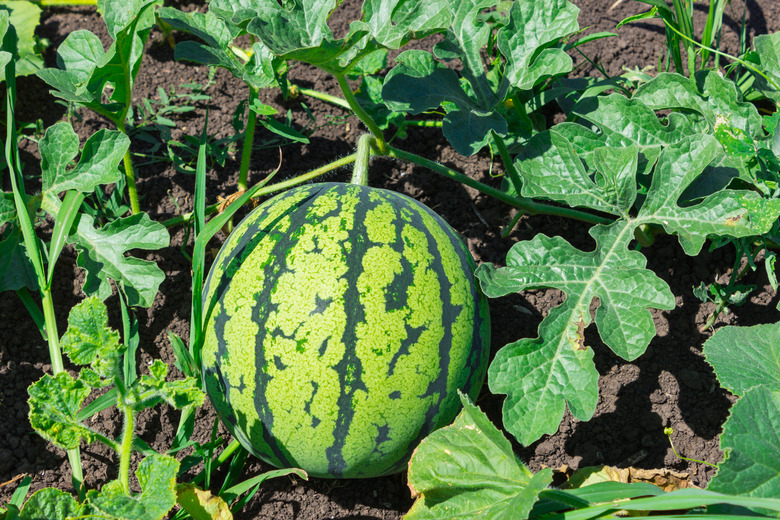Reasons For Soft Watermelons
Watermelon is a total sensual delight, with its dark-green striped skin in stunning contrast to the juicy crimson flesh. The fruit is some 92 percent water, and no matter how firm it is when you cut it, its flesh won't stay crisp forever once it is exposed to air. Because of this, it is important to choose a watermelon that is as firm as possible before cutting. Watermelons may become soft for a number of reasons.
When Ripe Turns to Riper
When Ripe Turns to Riper
Watermelons that are too ripe have soft, mushy flesh. This can be a simple case of ripe turning to riper. While an experienced grower can determine the ripeness of a watermelon from outside appearance alone, it is not always an easy task.
Generally, watermelons need five to six weeks after pollination to mature, so you can put that on your calendar if you are growing the melons yourself. Another way to gauge a fruit's ripeness includes watching for the part of the melon touching the ground to change color from green to light yellow. Of course, the most common method of testing ripeness is to thump the watermelon lightly; a hollow sound indicates ripeness, while a muffled, dull sound may indicate overripeness.
Disease in Watermelons
Disease in Watermelons
That icky, soft watermelon may have contracted a disease. Gummy stem blight, a disease caused by a fungal pathogen, results in the formation of brown, soft, circular lesions on watermelons. The lesions may be 4 to 6 inches in diameter and may ooze. The disease requires fungicide applications for control.
Blossom-end rot, a condition caused by calcium deficiency, results in the blossom end of the fruit turning from pale green to brown, then black. The affected areas grow in size and develop sunken spots on the surface of the fruit. Liming the soil to increase calcium content, maintaining even soil moisture to enable the uptake of calcium by the plant's root system, and foliar applications of calcium help manage this disease.
Rough Treatment of Melons
Rough Treatment of Melons
Rough handling during harvest or transport can also cause watermelon to bruise, promoting soft spots, decay, and a short shelf life. This is also the case with cantaloupe. A drop of even 8 inches can cause severe internal bruising in a watermelon. If the handlers are careful with the fruit and refrain from tossing or pitching them, much watermelon injury would be avoided.
Direct Sunlight and Heat
Direct Sunlight and Heat
Direct sunlight can affect the quality of watermelon after harvest. Melons left exposed to sunlight will develop sunburn rapidly. The grower should keep the fruit in shade after picking it, until it can be transferred to longer-term storage. Temperatures above 90 degrees Fahrenheit can also cause internal flesh breakdown and increase decay, causing the melon to become soft.
